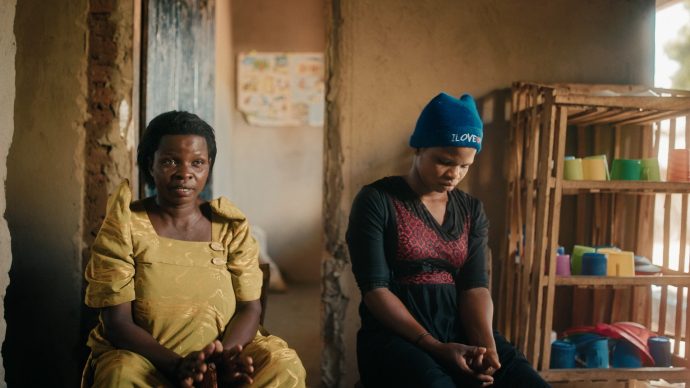Asien har indhentet resten af verden, når det kommer til forbrug, fastslår en ny rapport fra UNEP. Omstillingen til industri-samfund betyder, at regionen bliver mere afhængig af import af mineraler, metaller og fossile brændstoffer, og det vil have negativ indflydelse på miljøet.
BANGKOK, 24 April 2013: Asia Pacific has surpassed the rest of the world in its consumption of materials and will continue to dominate world material flows, according to a new UN Environment Programme (UNEP) report released Wednesday.
The region’s trade balance indicates that the current rate of exploitation of its resource base is no longer sufficient to support the region’s fast-growing economies and changing lifestyles.
From 1970-2008, consumption of construction minerals increased 13.4 times, metal ores and industrial minerals consumption 8.6, fossil fuels 5.4, and biomass 2.7 times.
Regionen afhængig af import grundet øget forbrug
The data indicates that, at this rate, the region will be increasingly dependent on imports and unable to sustain its economies and lifestyles. The current rate of consumption is also having a negative impact on the environment.
The report, “Recent Trends in Material Flows and Resource Productivity in Asia and the Pacific”, presents an insight of the 2011 Resource Efficiency: Economics and Outlook for Asia and the Pacific (REEO) report on material flows and resource productivity in Asia and the Pacific.
It brings together data extending the latest reported year up to 2008 and thus includes the onset of the global financial crisis.
Pres på miljøet er en følgevirkning
The report highlights the region’s material intensity – consumption of materials per dollar of Gross Domestic Product (GDP) – as an area of serious concern, as this will increase pressures on the environment and exceed the region’s rapid growth. Currently, material intensity for Asia Pacific is three times the rest of the world.
“Each dollar of GDP requires increasing amount of materials,” said Dr. Park Young-Woo, Regional Director of UNEP Regional Office for Asia and the Pacific.
“The findings do not give signs of decoupling material consumption and natural resource use from economic growth in the region.”
“Resource efficiency needs to increase rapidly to offset material growth in the Asia Pacific region, which needs systems innovations in urban areas, transportation modes, energy production and economic structure,” he added.
Næsten hele verdens vækst er sket i Asien
Almost all of the world’s growth in domestic material consumption, from the onset of the global financial crisis in 2008, can be attributed to Asia Pacific, which now shapes the world trajectory on growth in material consumption, according to the report.
Domestic materials consumption increased from 6.2 billion tonnes to 37.5 billion tonnes between 1970 and 2008, an annual growth rate of 4.8 per cent.
China and India heavily account for consumption by 2008, with China accounting for over 60 per cent of the regional total domestic material consumption, and India contributing over 14 per cent. The regional average per-capita material consumption now stands at 89 per cent that of the rest of the world.
Kinas forbrug er steget med 25 procent
China shows the most dramatic trends in recent years: Per-capita material consumption increased by 25 per cent between 2005 and 2008.
China has reinforced its position as a net importer of materials (in particular petroleum) due to strong domestic demand, contrary to the common perception of China as a mass exporter.
China has shown good progress in improving resource efficiency since the 1980s, but this has slowed down recently. It is still far less resource-efficient than the Asia Pacific and global averages.
In India, overall material consumption has remained low. However, metal ores and industrial minerals use grew by 8.6 per cent each year over the period from 1998 to 2008, which indicates that India is entering a rapid acceleration phase in its transition to an industrialized economy.
The insight showed another new development since the launch of the first REEO report: the stagnation since 2004 of the previously impressive improvements in resource efficiency from 1970 to 2004.
Fra biomasse til mineral-baseret økonomi
The report found that the region is moving from a biomass- to minerals-based economy, indicating that the most-populous countries like China and India are transitioning from agrarian to industrialized economies.
Biomass dropped from more than half to 25 per cent of the region’s domestic extraction, while construction materials grew to 51.4 per cent.
Population growth was also found to be the least-important driver of growing extractive pressures on the environment. Growing affluence and material intensity were cited as primary drivers and any effort to stabilize extractive pressure will need to address both, according to the report.
“The findings of the report conclude that countries in Asia and the Pacific face even greater challenges to make the transition of current economic growth patterns towards green growth, and to transform the economies into truly green economy, despite the strong efforts in development of policies and strategies by member countries,” said Dr. Park.
Rapporten stiller krav til regionens politikere
The report also underlined the urgent need for policymakers in the region to be vigilant in using of the latest data when developing their policies.
It recommends the establishment of a global harmonized database that shares material use data for all countries as an important step in helping policymakers and businesses anticipate resource issues, and to provide academia with reliable data to support decision makers with the policy relevant science.
‘Asia Pacific’ dækker over følgende lande: Vietnam, Thailand, Sydkorea, Pakistan, Malaysia, Japan, Indonesien, Indien, Kina og Australien.
http://www.unep.org/newscentre/Default.aspx?DocumentID=2713&ArticleID=9482&l=en














